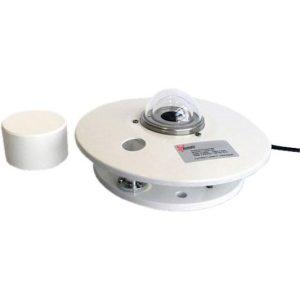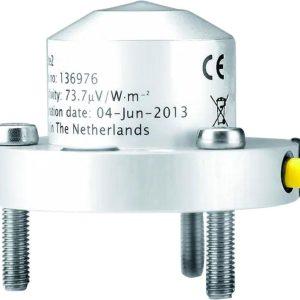In an era where renewable energy and environmental awareness are more critical than ever, solar radiation measurement important an indispensable role in understanding and optimizing energy resources. A solar pyranometer is one of the most valuable tools in this field
What is Solar Radiation?
Solar radiation refers to the energy emitted by the sun in the form of electromagnetic waves. This energy is the primary source of power for various processes on Earth, from weather patterns to the growth of plants.
How Does the Atmosphere Affect Solar Radiation?
As solar radiation passes through the Earth’s atmosphere, some of it is absorbed, scattered, or reflected by atmospheric particles and gases. This phenomenon affects the intensity and distribution of solar energy reaching the Earth’s surface.
Direct vs. Diffuse Solar Radiation
There are two main types of solar radiation: direct and diffuse. Direct solar radiation travels in a straight line from the sun to the Earth’s surface, while diffuse radiation is scattered in all directions by clouds and particles in the atmosphere.
What is a Solar Pyranometer?
Definition and Purpose
A solar pyranometer is a scientific instrument designed to measure global solar radiation. This includes both direct and diffuse radiation falling on a horizontal surface. Its primary purpose is to provide accurate data on the solar energy available at a specific location.
Key Components of a Pyranometer
The typical solar pyranometer consists of a thermopile detector, a protective dome, and a sensor that absorbs solar energy. The dome shields the sensor from environmental factors while still allowing solar radiation to pass through.
How Solar Pyranometers Work
The Basic Working Principle
A solar pyranometer measures the energy from the sun by detecting the heat generated when solar radiation strikes its sensor. The thermopile inside the pyranometer produces a voltage proportional to the intensity of the incoming radiation.
Sensitivity to the Solar Spectrum
Pyranometers are designed to be sensitive to a wide range of wavelengths, typically from 300 nm to 2800 nm, covering the ultraviolet, visible, and infrared spectra.
Calibration and Accuracy
For accurate results, pyranometers need to be calibrated regularly. Calibration involves comparing the pyranometer’s readings with a reference instrument under standardized conditions.
Applications of Solar Pyranometers
Solar Energy Industry
In solar power plants, pyranometers are essential for monitoring the amount of solar radiation available to optimize the positioning and performance of solar panels.
Meteorological Research
Pyranometers are also widely used in meteorology to study and predict weather patterns based on solar radiation data.
Agriculture and Environmental Monitoring
Farmers and environmental scientists use pyranometers to understand how sunlight affects crop growth and ecosystem health.
Pyranometers in Solar Power Plants
Optimizing Solar Panel Efficiency
By measuring the available solar radiation, pyranometers help ensure that solar panels are oriented correctly and operating at maximum efficiency.
Monitoring Solar Panel Performance
Pyranometers also play a role in long-term performance monitoring, allowing solar farm operators to detect inefficiencies and perform necessary maintenance.
Pyranometers in Weather Stations
Importance of Pyranometers in Climatology
Accurate solar radiation measurements are crucial for understanding climate patterns, helping meteorologists predict weather changes more accurately.
Real-Time Weather Forecasting
Weather stations equipped with pyranometers can provide real-time data, which improves the reliability of solar radiation forecasts.
Factors Affecting Pyranometer Accuracy
Angle of Installation
The angle at which a pyranometer is installed significantly affects its accuracy. Ideally, it should be positioned horizontally to capture both direct and diffuse solar radiation.
Environmental Conditions
Temperature fluctuations, dust, and humidity can all affect a pyranometer’s performance. Regular cleaning and maintenance are necessary to ensure accurate readings.
Benefits of Using Solar Pyranometers
Economic Benefits in Solar Energy
Accurate solar radiation data helps solar energy companies maximize efficiency and reduce costs, leading to more profitable operations.
Environmental Monitoring Benefits
In addition to economic benefits, pyranometers provide crucial data for understanding and mitigating the environmental impacts of human activity.








